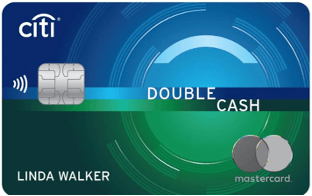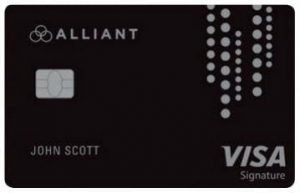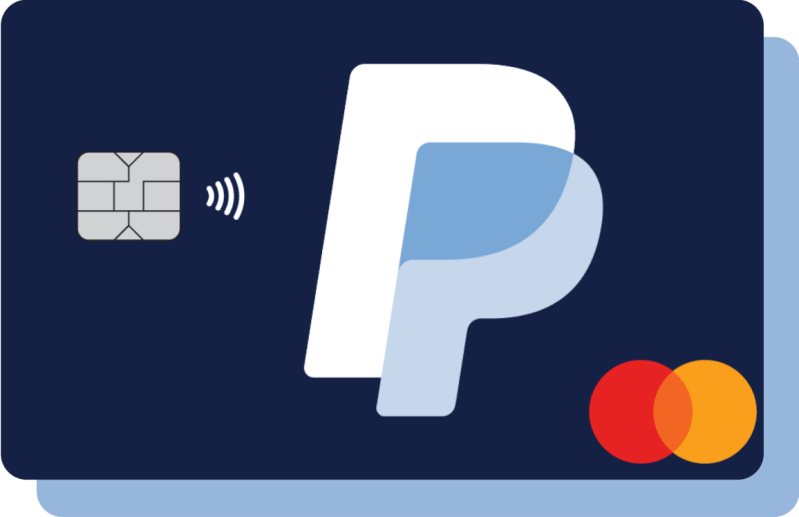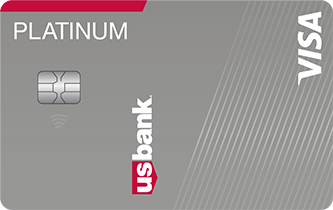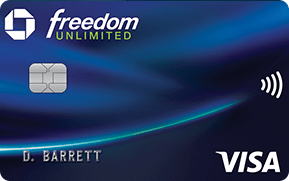Team Clark spent hours reviewing the market for these cards and put them to the test of guidelines set by money expert Clark Howard.
We considered factors like rewards programs, welcome bonuses, length of introductory APR periods and bonus categories.
This article was updated in May 2023 and I review it every month. Detailed notes on all updates can be found here.
Top “No Annual Fee” Credit Cards to Apply for Right Now
|
Citi® Double Cash Card
Best For: Everyday Rewards
|
|
Alliant Cashback Visa® Signature Credit Card
Best For: High-Volume Spending
|
|
PayPal Cashback Mastercard®
Best For: Online Shopping
|
|
Discover it® Miles
Best For: Travel
|
|
Chase Freedom Flex
Best For: Rotating Bonus Categories
|
|
Discover it® Cash Back
Best For: Cash Back Bonuses
|
|
U.S. Bank Visa® Platinum Card
Best For: 0% Balance Transfers
|
|
Chase Freedom Unlimited®
Best For: 0% New Purchases
|
Are you looking for a free credit card in 2023? Well, there’s actually no such thing as free in the credit card world, but you can get a card that has no annual fee.
In fact, there’s a pretty wide variety of no annual fee credit cards on the market. Some of them have great rewards programs, while others focus on cash back bonuses or low-interest offers.
Money expert Clark Howard is a strong proponent of picking out a no annual fee credit card that offers you the best mix of cash rewards and low rates.
“No annual fee cards are best for most consumers because — from the get-go — you aren’t having to lay out any money to use these cards,” Clark says.
“I’m really strident on that because, in many cases, those annual fee cards are simply aspirational for consumers. People pay those big annual fees and get those cards because they get sucked in by the fantasy of ‘Hey, if I get this card I’m going to Tahiti! And that’s going to be me on the beach in Maui!’ We conspire against ourselves because we daydream about what we’re going to have.”
Keeping with Clark’s advice to keep our financial heads out of the sky, let’s set the focus on finding the best no annual fee card for your wallet.
In this article, I have some tips for picking the right no annual fee credit card as well as some suggestions for the top cards on the market.
More on “No Annual Fee” Credit Cards:
- Best No Annual Fee Credit Cards
- Clark Howard’s Strategy for No Annual Fee Credit Cards
- Methodology
- Frequently Asked Questions
Best for Everyday Rewards: Citi® Double Cash Card-18 month BT offer
|
Annual Fee:
$0.00
Bonus Offer:
Earn 2% on every purchase with unlimited 1% cash back
Intro APR Period on New Purchases:
N/A
Intro APR Period on Balance Transfers:
18 months
Rewards Program Details:
Earn 2% on every purchase with unlimited 1% cash back when you buy, plus an additional 1% as you pay for those purchases.
|
Why We Like It
For the average consumer, a slow-and-steady cash back return often wins the race. If you spend your money at a variety of places for a variety of reasons, you may find that you’re better off locking in the returns of an unlimited 2% cash back card. That way you know that you’re getting a solid rate of return on your purchase no matter what.
This is one of the cards in Clark Howard’s wallet, but it’s not the only game in town. You could opt for the PayPal Cashback Mastercard® instead. It too offers an unlimited 2% cash back on all purchases and even 3% on purchases made via PayPal.
Best for High-Volume Spending: Alliant Cashback Visa® Signature Credit Card
|
Annual Fee:
$0.00
Bonus Offer:
None
Intro APR Period on New Purchases:
None
Intro APR Period on Balance Transfers:
None
Rewards Program Details:
Tier 1 rewards members receive 2.5% cash back on all purchases up to $10,000 in spending per billing cycle. After that, they’ll receive 1.5% back for the remainder of the billing cycle. Tier 2 rewards members receive 1.5% cash back on all purchases. |
Why We Like It
If you are willing to do your banking with this credit union, you may be able to get 2.5% cash back on your spending of up to $10,000 per month. There are no categorical restrictions to that spending.
The extra half of a percent really does add up. For example, if you spend $5,000 per month with this card, you’d receive $1,500 cash back annually — as opposed to $1,200 with a card like Citi Double Cash.
This card does require a credit union membership with Alliant and it also requires that you stay within their “Tier One” status to receive the top rewards, so you’ll want to check our review of the card to ensure your eligibility.
Best for Online Purchases: PayPal Cashback Mastercard®
|
Annual Fee:
$0.00
Bonus Offer:
None
Intro APR Period on New Purchases:
None
Intro APR Period on Balance Transfers:
None
Rewards Program Details:
Earn 3% cash back on PayPal purchases and 2% on all other purchases. |
Why We Like It
While there are no-annual fee credit cards out there that offer up to 5% cash back for online shopping at their specific store, this card offers shoppers the opportunity to earn 3% cash back with any online retailer that accepts PayPal as a payment option.
Best for Travel: Discover it® Miles
|
Annual Fee:
$0.00
Bonus Offer:
Discover automatically matches all the Miles you earn at the end of your first year. Example: 35,000 Miles becomes 70,000 Miles, which is $700 all for you.
Intro APR Period on New Purchases:
0% intro APR for 15 months from date of account opening.
Intro APR Period on Balance Transfers:
0% intro APR for 15 months from date of first transfer, for transfers under this offer that post to your account by July 10, 2023.
Rewards Program Details:
1.5xMiles on every dollar of every purchase.
There’s no limit to how many Miles you can earn. Then redeem for cash, or as a statement credit towards a travel purchase.
|
Why We Like It
Truthfully, the best travel cards usually carry at least a small annual fee. For example, the Southwest Rapid Rewards cards are popular and have two options with an annual fee under $100.
But as far as the no annual fee travel cards go, we like this one because the rewards are not tied to one specific hotel or airline brand. It doesn’t even require you to spend on travel to get miles as a reward. And it allows you to convert your miles to cash back if you decide you’re not looking to travel.
Clark says that you should assess your spending habits before making a travel credit card your top choice. The average consumer is likely to benefit from a more generic form of rewards.
Best for Rotating Bonuses: Chase Freedom FlexSM
|
Annual Fee:
$0.00
Bonus Offer:
Earn a $200 bonus after you spend $500 on purchases in the first 3 months from account opening. Plus, earn 5% cash back on grocery store purchases on up to $12,000 spent in the first year.
Intro APR Period on New Purchases:
Intro APR for the first 15 months that your Account is open.
Intro APR Period on Balance Transfers:
15 months
Rewards Program Details:
Earn 5% cash back on different categories like gas stations, grocery stores (excluding Target® and Walmart®) and select online merchants on up to $1,500 in total combined purchases each quarter you activate. Earn 5% on travel purchased through Chase Ultimate Rewards. Earn 3% on dining at restaurants, including takeout and eligible delivery services. Earn 3% on drugstore purchases. Earn 1% on all other purchases. |
Why We Like It
Team Clark likes the 5% cash back you can earn with this card via rotating category bonuses, but you’ll also get a solid 3% on dining purchases as well.
This card is very similar to the Chase Freedom Unlimited® (featured later in this article). You’ll want to study the differences between the two to pick which is best for your wallet.
Best for Cash Back Bonuses: Discover it® Cash Back
|
Annual Fee:
$0.00
Bonus Offer:
Unlimited dollar-for-dollar match of all the cash back you’ve earned at the end of your first year.
Intro APR Period on New Purchases:
15 months
Intro APR Period on Balance Transfers:
15 months
Rewards Program Details:
5%Cash Back:
Earn 5% cash back on everyday purchases at different places each quarter like Amazon.com, grocery stores, restaurants, gas stations and when you pay using PayPal, up to the quarterly maximum when you activate.
1% Cash Back
Earn 1% cash back on all other purchases – automatically.
Unlimited Cashback Match:
With Cashback Match, get an unlimited dollar-for-dollar match of all the cash back you’ve earned at the end of your first year, automatically.
|
Why We Like It
What makes the Discover it card so appealing is the 5% cash back categories combined with the cash back match for the first year of card membership. For example, you can earn up to $75 in cash back each quarter if you max spend on the rotating 5% cash back categories. When you apply the cash back match to that spending, you’d be in line for $600 in cash back rewards for spending $6,000 in one year.
As Discover makes its second appearance on our list, you may notice that its consumer-friendly motto is perfect for this article: “No annual fee on any card.”
Best for 0% Balance Transfers: U.S. Bank Visa® Platinum Card
|
Annual Fee:
$0.00
Bonus Offer:
None
Intro APR Period on New Purchases:
18 months
Intro APR Period on Balance Transfers:
18 months
Variable APR:
19.24% to 29.24% based on your creditworthiness
Balance Transfer Fees:
Either 3% of the amount of each transfer or $5 minimum, whichever is greater.
|
Why We Like It
It’s hard to beat the 0% APR period on both new purchases and balance transfers.
Clark would prefer that you contact your local credit union to inquire about a credit card with a long-term low interest rate. But this card could serve as a stopgap if you find yourself in a tough spot and need to make a purchase or move a balance and still avoid paying interest.
This card also offers you cell phone protection if you pay your wireless bill with the card each month. That can help you save big if your phone is damaged or stolen.
Best for 0% New Purchases: Chase Freedom Unlimited®
|
Annual Fee:
$0.00
Bonus Offer:
Earn a $200 bonus after you spend $500 on purchases in the first 3 months from account opening. Plus, 5% cash back on grocery store purchases on up to $12,000 spent in the first year.
Intro APR Period on New Purchases:
15 months
Intro APR Period on Balance Transfers:
15 months
Rewards Program Details:
Earn unlimited 1.5% cash back or more on all purchases. You’ll get 3% on dining and drugstores and 5% on travel purchased through Chase. |
Why We Like It
The Chase Freedom Unlimited® credit card offers 0% Intro APR on Purchases for 15 months. Afterwards, the Variable APR will be 19.74% – 28.49% , based on creditworthiness.
You can probably find some cards that offer a longer introductory 0% APR offer, but we like this one best because it offers more long-term benefits than many of the other cards in this category. You’ll get an easy-to-achieve welcome bonus and cash back categories that last well beyond the introductory offer.
This card is very similar to the Chase Freedom FlexSM, which is also mentioned in the article. You’ll want to study the differences between the two to pick which is best for your wallet.
Clark Howard’s Strategy for “No Annual Fee” Credit Cards
Clark says he likes to divide the “no annual fee” credit card market into two sectors: cards for people who are running a monthly balance and cards for people who are paying their bills in full each month.
If you ARE NOT paying your credit card bill in full each month, Clark says:
“For people who run balances on your credit cards, I want you to check with your local credit union. Credit unions are almost always going to be the cheapest on the interest rate. A lot of the credit unions are still in single digits on the interest rate if you’re forced to run a balance. Not that anyone should jump for joy if they’re paying 9% interest, but the normal average credit card rate is up around 18%. So you can cut your interest rate in half with a good credit union card.”
If you ARE paying your credit card bill in full each month, Clark says:
“For people who don’t run a balance, doing a 2% cash back card is my favorite strategy. My second favorite is getting a card like the one from Costco or Sam’s Club. That’s particularly if you are the type of person who can be disciplined and say ‘OK, I will use this card at this place and the other card at that place.’ Then you’re the type of person who can take no annual fee cards and really maximize your rewards. You could earn 4% in rewards on gas, 3% at your favorite restaurants, and the Costco card even gives you 2% on everything you buy in the store or on their website.”
Clark’s General Strategy on Credit Cards
Clark believes it is important to have a credit card for the purpose of building and maintaining a solid credit history. That’s to prepare you for big life events like a home purchase or job application that require credit checks.
He also believes that focusing on credit card rewards — like those offered on no annual fee credit cards — should be a consideration only for people who pay off their balances each month.
Assuming you’re here because you are in search of the maximum benefits from your credit cards, Clark wants you to think about how you spend your money and how that might best be complemented by the rewards programs from the various cards.
“Really think through your charge patterns and whether or not those rewards really give you a bang for your buck.”
Clark carries the Costco Anywhere Visa card in his wallet because he’s a frequent Costco shopper. He also likes the Citi Double Cash card because of the simplicity of the unlimited 2% cash back program.
Methodology for No Annual Fee Credit Cards
For the purposes of determining which cards are “best” in this category, I got input from money expert Clark Howard and sought to find cards that best fit his credit card strategy.
I spent many hours reviewing the available no annual fee credit cards on the market, assessing them for several factors including:
- Welcome bonuses
- Rewards programs
- Length of introductory APR periods
- Balance transfer introductory periods
- Additional fees (transaction or otherwise)
- Perks offered to cardholders
For obvious reasons, I did not include cards with annual fees. Unless there is a very specific reason to carry a card with an annual fee, Clark advises against it.
I also did not include offerings from local or regional banks and credit unions because they’re not available to everyone. Clark recommends that, if you need to carry a balance, check with your local credit union for a no annual fee card that has a low, fixed interest rate.
Often, local institutions will have desirable cards, so you should compare your local bank or credit union’s credit cards to the ones that made this list.
Frequently Asked Questions: No Annual Fee Credit Cards
Are “free credit cards” actually free?
Some people may refer to cards that have no annual fee as “free.” While it may be true that you don’t have to pay for the privilege to carry the card, you still could be subject to a variety of fees if you’re not careful. Aside from interest charges on any balance you carry, you may also be charged for things like balance transfers, cash advances, late payments and more.
On a no annual fee card, which is better: good rewards or low rates?
This depends on the type of consumer you are. If you’re someone who often has a balance left over at the end of the month, Clark says you need to find a card with the lowest interest rate possible. If you are diligent about paying your bill in full each month, you may be better suited to using a card that rewards your spending.
Article Updates
 How Many Credit Cards Should I Have? - Are you worried that the number of credit cards you have could have a negative impact on your financial life? Is there a “right” number of credit cards for one person to have in 2023? The answer is a little…
How Many Credit Cards Should I Have? - Are you worried that the number of credit cards you have could have a negative impact on your financial life? Is there a “right” number of credit cards for one person to have in 2023? The answer is a little…  Best Credit Card Sign-up Bonuses for 2023 - Team Clark spent hours reviewing the market for credit card sign-up bonuses and evaluated them according to the guidelines for usage set by money expert Clark Howard. Clark believes credit cards with exorbitant annual fees are a bad idea for most…
Best Credit Card Sign-up Bonuses for 2023 - Team Clark spent hours reviewing the market for credit card sign-up bonuses and evaluated them according to the guidelines for usage set by money expert Clark Howard. Clark believes credit cards with exorbitant annual fees are a bad idea for most… 